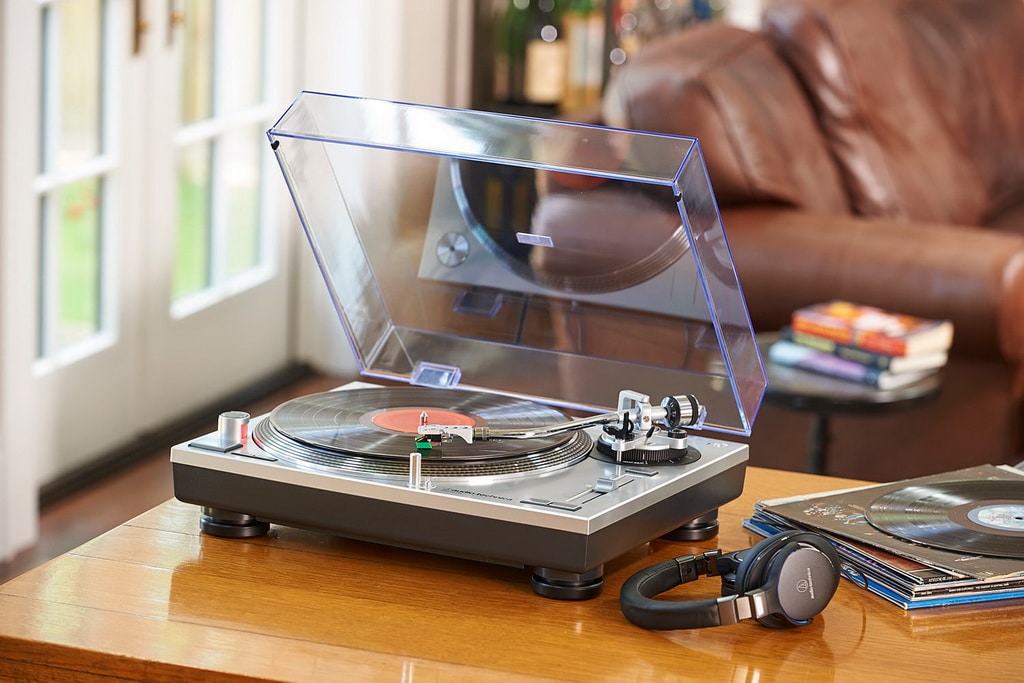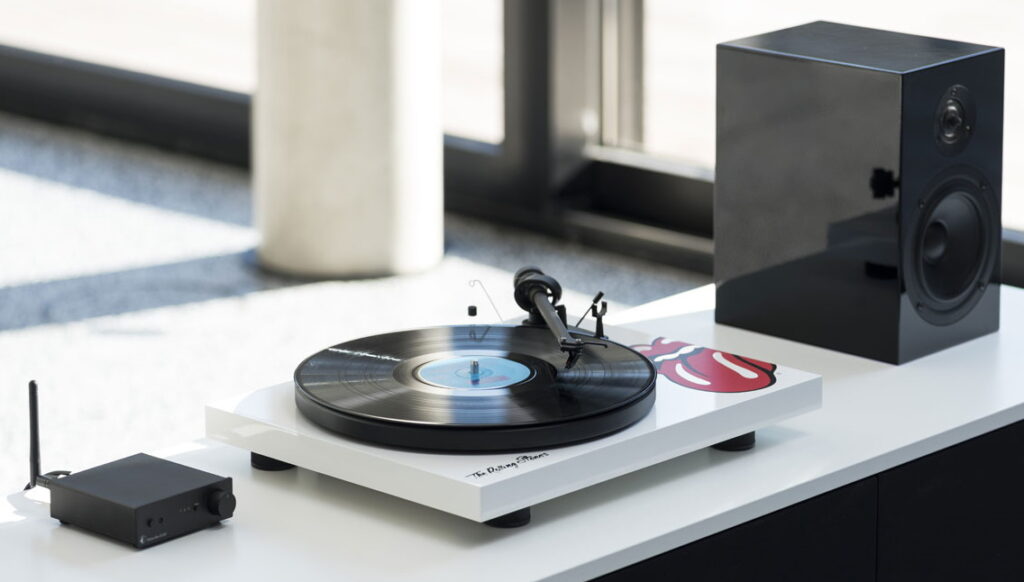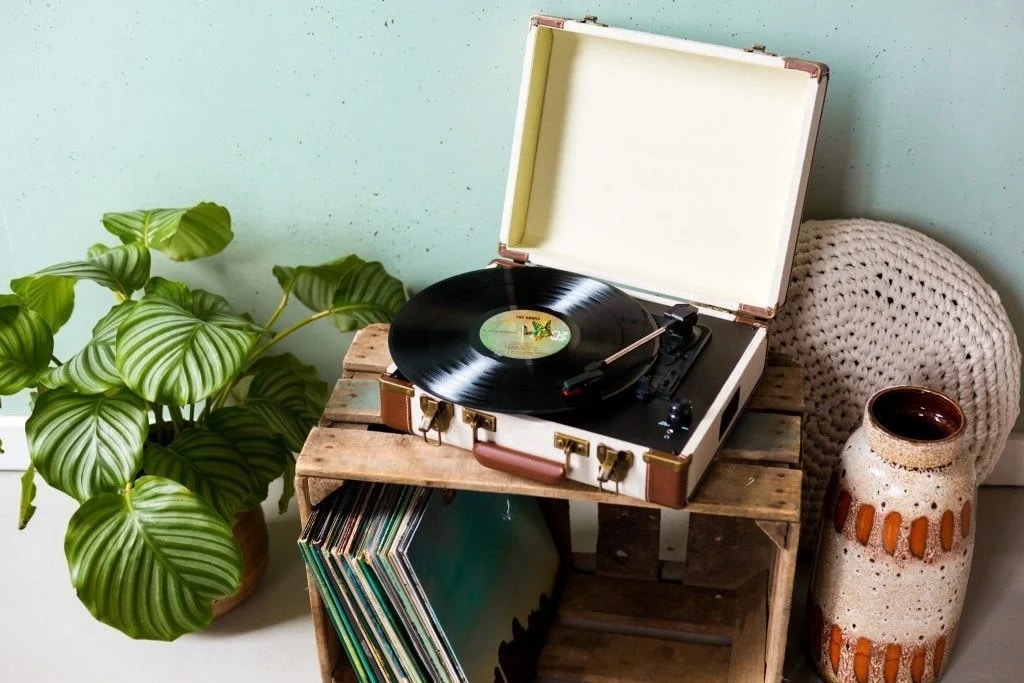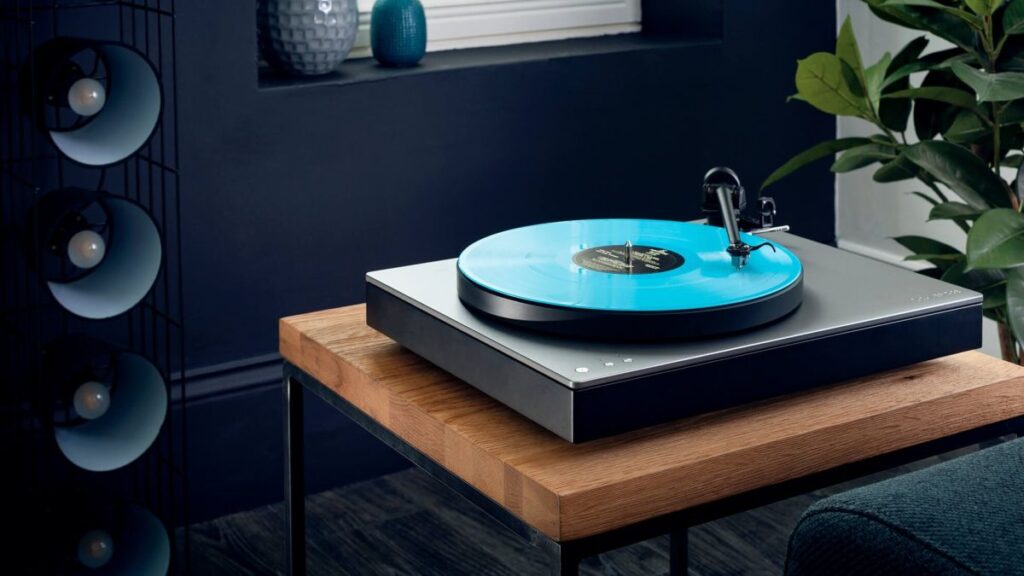Are you looking for the clearest and highest quality sound from your turntables? If you are, then welcome to this honest review of the best receivers for turntables. Whether you’re spinning some records for a house party or listening to some old music on a turntable, you’ll definitely want to have the smoothest sound possible.
In this article, we’ll introduce you to the 6 top-rated receivers for turntables available on the market with the Sony STRDH190 as our Editor’s Choice. We’ll take a closer look at each model and give you what we liked and what we didn’t like. The individual features that we’ll explore include the number of channels each unit has, impedance, inputs and outputs, dimensions, and warranty. All of these will have an impact on the overall experience you get from the receiver. Are you ready to learn more? Stick to our recommendations, and by the end of our research, you will be able to make your final decision. Let’s get started!
More features: low-profile design, allows to connect up to 4 speakers, A/B switching, FM radio with 30 station presets, Bluetooth
Our Editor’s Choice is the Sony STRDH190. Sony is internationally known as being one of the best electronics brands, and they really hit a home run with this receiver. It comes equipped with two channels for your speakers, each with a maximum wattage of 100 for a total of 200 watts. Next, It features an impedance range of 6-16 ohms, giving you total control as to whether you want to use little power or its full potential. It also comes with a good variety of inputs, including a phono, four stereo RCA audio inputs, and a 3.5mm jack for plugging your headphones. Overall, the quality and build of this receiver are very good, and it has a smooth-looking exterior. It’s also the biggest receiver on our list at 17 inches wide and 5-inches tall with a depth of 11 inches. It comes equipped with FM radio and gives you the flexibility to pick between 30 different radio stations. As with many similar products, this Sony receiver comes with a 1-year warranty.
What we liked: If your turntable doesn’t have a preamp, this is the best receiver for you. It’s also an excellent digital option because you can play music from your phone using the Bluetooth function.
What could be better: There’s little in the way of sound customization with this receiver. It has a very minimalistic interface, and it just doesn’t give you that full customization that other receivers have.
More features: mixing mode, EQ controls, USB/SD support up to 64GB, wireless audio streaming
The great thing about the receivers for turntables is that they are generally affordable, but for people shopping for one on a very tight budget, we would recommend our Best Value pick, the Pyle PTA4 Stereo Receiver Box. It’s not as sleek and modern-looking as our Editor’s Choice, but it does the job very well and offers clear sound. For instance, it comes with two channels, each with excellent wattage at 120 for each channel. It does have a rather low impedance at 4 ohms, yet despite this, it still can be an ideal choice for higher-powered speakers. Next, it has three RCA audio inputs to go along with one for a ¼” microphone and an auxiliary input. One thing that stands out about this receiver is that it is small at 8.3-inches wide, 2.7-inches tall, and a depth of 5.4-inches. If you ever feel lazy, you can stream music to this receiver by taking advantage of its wireless audio streaming feature.
What we liked: It’s really hard to find a receiver that is this high in quality, given its price. We highly recommend it to people who aren’t willing to splurge on a fancy receiver and to those who are just getting started with receivers for their turntables.
What could be better: Despite its low price, one of the biggest complaints among people who have purchased this receiver is that it can malfunction and stop working altogether after several months of heavy usage.
More features: compact and sturdy design, remains silent when nothing is playing, treble and bass controls
If you have limited space, you might want to opt for a receiver that is much smaller than the previous one. For that, check out our best compact receiver, the Fosi Audio TPA3116 2-Channel Stereo Audio Amplifier Receiver. This receiver is so tiny that it practically fits in the palm of your hand. At only 3.55-inches wide, 1.4-inches tall, and 4.25-inches deep, this receiver is, by far, the smallest one on our list. It also weighs just as light as a feather at less than two pounds. Despite its compact size, it has 2 channels with each for 100 watts and a solid impedance of 4 ohms. The inputs and outputs are basic and simple, and you are able to control the quality of the sound through the bass and treble controls. Lastly, this receiver comes with an 18-month warranty.
What we liked: If you’re looking for a compact receiver, it’s hard to find one that blends in with a room and your turntable setup more than this unit.
What could be better: Be careful with the front knobs as they can get quite loose over time, and, in some cases, it can fall off completely.
More features: Bluetooth, built-in preamplifier, adjustable bass and treble, VU meter, comes with 5 ft. RCA to 3.5 mm cable and 5.5 ft. power cable
Modern receivers are quite advanced these days and allow you to connect your devices to it with Bluetooth. The Rockville BluTube 70W comes with a built-in preamplifier and is quite powerful. The most notable feature is the four tubes at the front that help to produce a warm and rich sound. Also, the Bluetooth connection has a range of 33 feet and is quite powerful to ensure a clear signal. This receiver is able to tailor the wattage of its two channels to either 25 or 35 watts for each channel. At 25 watts, it will require 8 ohms, while using 35 watts will bring that down to 4 ohms. It comes with USB and RCA audio inputs to go along with headphones and the aforementioned speakers as its outputs. It has a unique design and size that is complemented by those four tubes.
What we liked: We were really impressed by the overall sound quality of this receiver. Along with its price, this receiver is definitely one that provides more value for your money.
What could be better: It might have a loud buzzing sound when using it at full power. Another minor annoyance is that there is always a flashing light whenever it’s connected via Bluetooth. This light could definitely be less prominent.
More features: AM/FM radio with 50 station presets, bass, treble, and echo controls, comes with remote, AM loop antenna, FM antenna, cables
For people looking for excellent power with deep sound from your amp, they need to focus on the channels and output of a receiver. The receiver that offers a lot of power is the Pyle Home PT270AIU. For those that don’t know, the watts per channel is the best indicator of how much your amp can deliver to the speakers. A power rating as high as the one offered in this receiver, 150 watts or 300 watts, means your amp will be very loud. It has an impedance range of 4-16 ohms, which is fairly standard among the best receivers for turntables. This receiver comes with RCA audio, USB, SD, and a ¼” mic inputs and an output for speakers.
What we liked: If you’re looking for radio stations, this receiver comes loaded with 50 station presets for your favorite AM and FM radio stations. On top of that, you will get a remote control with it, which is handy to have around.
What could be better: The remote control is very convenient to have, but the baffling part about it is that it does not have a power on/off button on it. Also, the FM radio antenna is very spotty and can cause difficulties to your receiver.
More features: Bluetooth, Wi-Fi, AirPlay, voice control compatible, remote control, supports 4K Ultra HD, HEOS technology, and 3D audio transmission
For people who know a lot about receivers and simply want to buy the high-end model no matter what its price is, they should turn to our Premium Pick, the Denon AVR-X2600H Receiver. While having not as much of a familiar name like Sony, Denon does have a reputation for making very high-quality electronics as well. This receiver comes with amazing seven channels, with each channel offering 95 watts. Also, it has a standard impedance range of 4-16 ohms, which is great for your turntable for producing excellent and clear sound. As for its inputs, you can expect a lot, as it comes with eight HDMI inputs, LAN, Bluetooth, and Wi-Fi antenna. It features two HDMI outputs and one for surround sound speakers. This receiver definitely has a much more digital flare to it, as you can see by the inputs and outputs. This is also evident in the fact that it supports 4K Ultra HD and 3D audio transmission.
What we liked: We really enjoyed this high-tech receiver. We especially enjoyed the clear sound it produced, and the voice control was a very nice touch.
What could be better: Because it is much bigger in size and can handle more in terms of power, it can overheat fast if you overload it, so be mindful of that when using it.
It’s now time to give you a bit of a tutorial about receivers. In this section, we’ll discuss in greater detail each of the most important components of a turntable receiver. The goal here is to help inform you about these individual features and how they all work together to produce the best receiver. With this information, it may help you formulate a better understanding of which one to purchase next. If you’re still unsure what you should get, then stick around for our verdict, where we’ll give you our top three picks.

With one of the best receivers for turntables, you can turn the low-quality tones into beautiful, clear-sounding music.
What many people may be surprised to know is that a receiver actually has an amp inside of it, which helps direct the sound it is digitally creating to the speakers. Many people opt to choose an external amplifier instead of a receiver, and while you’re most certainly free to do so, just know that these two devices are not the same. An external amplifier will amplify the sound or make it much louder, but not necessarily clearer. For example, if you have your receiver hooked up to your turntable, and you’re looking to have the clearest possible sound and not exactly the loudest, then go with a receiver. On the other hand, if you’re looking to throw a massive dance party in your living room and want to blare it as loudly as possible without caring much for sound quality, then an amplifier is for you.
When it comes to deciding how to pick the best receiver for turntables, there are many things you should consider. Some people may have a good idea of what they’re looking for, and that’s great to know what you want. But there are plenty of people who simply have no idea either what to look for or what to focus on. This section is for you. Here, we’ll explain some of the most important features so that you will gain this knowledge to figure out what you should check. The components we’ll cover below include the number of channels, impedance, inputs, outputs, built-in FM radio, wireless connection, dimensions, weight, warranty, and finally, its price.

Impedance can be a bit of a complicated term to understand, so let’s attempt to break it down as simply as possible. When you hear the term impedance, it means how much resistance your receiver has in relation to your speakers. Electrical circuits are always fighting the electrical flow, and this is impedance. The ohms measure impedance, and all speakers will have an ohm figure or range. For example, our Editor’s Choice, the Sony STRDH190, has it between 6 and 16 ohms.
With 6 ohms, the speakers will get more power from a receiver. This will obviously reduce a receiver’s ability to churn out a clearer sound. When turning it to 16 ohms, you’re lowering your receiver’s power output.
The inputs on a turntable receiver refer to the different methods you can plug something into it. This one-way flow sends a signal to your receiver. The best receivers for turntables all have different inputs, and it can vary depending on the model you choose. For example, the Denon AVR-X2600H Receiver has a much heavier digital input focus as it has eight different inputs for HDMI to go along with a Bluetooth and Wi-Fi antenna. On the other hand, a receiver like the Pyle PTA4 Stereo Receiver Box is a bit more traditional as it has three RCA audio inputs and an auxiliary input.
If inputs process what comes into the receiver, the outputs are where the signal is going to. Once again, this can be different for each receiver, but the general idea for turntable receivers is that the outputs are going to some form of speakers. Some receivers, like our Premium Pick, the Denon AVR-X2600H Receiver, feature ultra-deluxe outputs in the form of surround sound speakers. Also, if you’re spinning some hit tunes, most receivers have outputs that can connect to headphones.
You might be surprised to find out that the best turntable receivers are also able to play FM radio channels. Receivers are generally fairly advanced and can pick up FM radio waves but not necessarily all AM radio waves. Receivers are able to pick up FM radio stations more clearly because it produces an enhanced radio frequency response with less of that fuzziness or audio distortion that you’re probably used to hearing on AM channels.
Usually, modern receivers will come with a certain number of preset FM and AM channels, with 20-50 being a typical range.
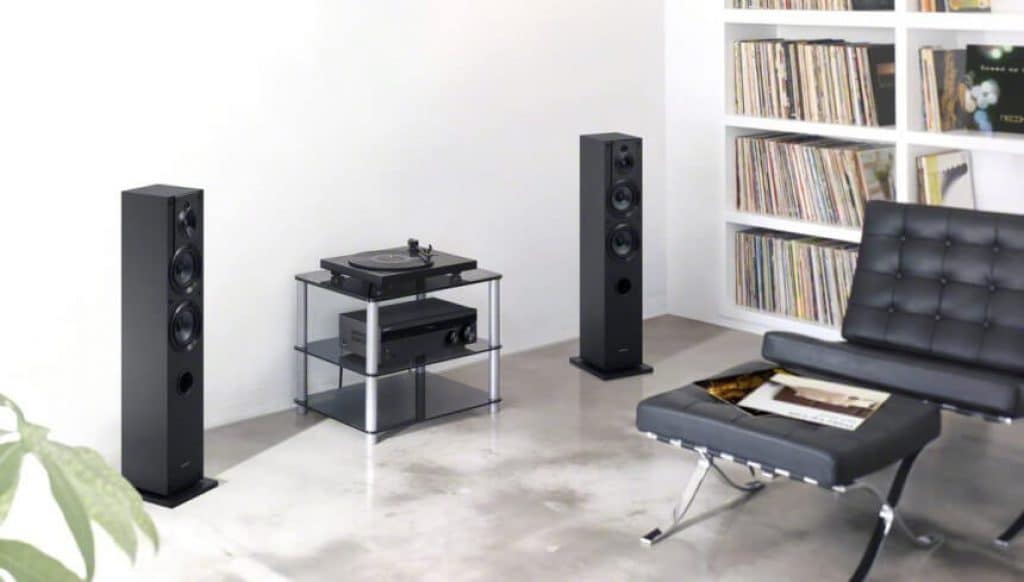
The thing about receivers for turntables is that you’re probably not going to want a big one such as the one you would buy for your surround sound television system. Thus, the dimensions of a turntable receiver will be much smaller in size. As the smallest unit here, we have the Fosi Audio TPA3116 2-Channel Stereo Audio Amplifier Receiver that is only 4.25-inches wide, 3.54-inches deep, and 1.38-inches tall. For most people, you could fit this in your hand. On the other hand, the biggest receiver on our list is the Denon AVR-X2600H, and this one is only 17.1-inches wide, 13.3-inches deep, and 6-inches tall. This is much bigger than our smallest one, yet not all that big.
When it comes to the question if one of these receivers for turntables has a warranty period, don’t be afraid. Most receivers these days come with a warranty, with the only catch being that the policy and length. They can vary across different brands. Generally, we have found that these warranty periods tend to last anywhere between one and two years. If this is something you’re particularly concerned about, it’s best to find out the length of the warranty period and inquire for more information to see what exactly is covered during this period as it may not cover the entire receiver and only certain parts of it.
When it comes to the prices of these receivers, it’s very much true that you can find a model in any range. If you’re looking for a receiver on the more budget-friendly side, our Best Value, the Pyle PTA4 Stereo Receiver Box, comes in at a shockingly low price, around $60. You can also get the Fosi Audio TPA3116 2-Channel Stereo Audio Amplifier Receiver and the Pyle Home PT270AIU for less than $80 as well. On the opposite end of the spectrum, our Premium Pick, the Denon AVR-X2600H Receiver, has a price tag of a sky-high $800! If you’re looking for high quality at the best possible price, our Editor’s Choice is fairly priced at only $150.
Our Editor’s Choice, the Sony STRDH190, offers the best overall experience at the best possible price. It combines a minimalistic design with superior sound quality that is sure to carry the sound from your turntables very well to your speakers.
Next up, people shopping for the best deal possible should turn to the Pyle PTA4 Stereo Receiver Box. On top of its ultra-low price, this receiver offers great power per channel and wireless audio streaming for people who want to use it with their phones or computers.
Lastly, if you have pockets full of cash and want a high-end receiver, look no further than the Denon AVR-X2600H. Apart from being one of the best receivers for turntables with crystal-clear sound from its seven channels, it also is, by far, the most technologically advanced and focused model on our list. It boasts plenty of excellent digital features to enhance your experience.
